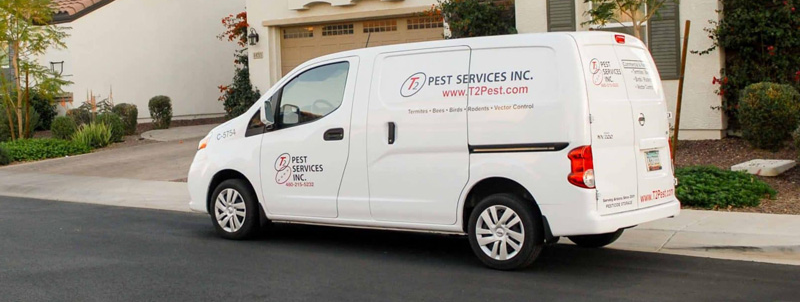In Arizona’s desert climate, scorpions are not just a nuisance as they’re a genuine household threat. These nocturnal arachnids can easily enter homes through tiny cracks, hiding in places most residents wouldn’t think to check. Their stings range from painful to dangerous, especially for children, pets, and those with allergies. That’s why having a scorpion-proof strategy is essential for homeowners across the region.
The good news is that a combination of structural adjustments, routine inspections, and strategic prevention can dramatically reduce the likelihood of scorpions entering your home. Here are five critical steps that contribute to a truly scorpion-proof environment.
1. Seal Entry Points and Foundation Gaps
Scorpions are excellent at squeezing through small spaces, sometimes as narrow as a credit card’s thickness. Gaps around doorways, cracks in the foundation, or open vents become effortless access points if left unsealed.
To prevent scorpions from entering your home:
- Inspect and caulk around window frames and door thresholds
- Install door sweeps and weather stripping on all exterior entrances
- Use mesh covers on weep holes, vents, and drain openings
- Repair foundation cracks and damaged stucco as soon as they appear
- Keep garage doors closed when not in use
Pay particular attention to older homes where settling or wear may have created new vulnerabilities over time. Many scorpions, especially those active in Arizona, are drawn to cooler indoor environments during hot months and will exploit the smallest opening to gain access.
2. Remove Shelter and Hiding Places Outdoors
Your yard can be the first line of defense or an open invitation. Scorpions often establish themselves in outdoor hiding places before migrating indoors. Woodpiles, decorative rocks, and overgrown vegetation serve as ideal shelters where they remain unnoticed during the day.
Key ways to reduce outdoor harborage areas:
- Keep firewood stacked at least 20 feet from your home and elevate it off the ground
- Trim back bushes, ivy, and tree limbs that touch exterior walls or overhang the roof
- Remove leaf litter, yard debris, and unused construction materials
- Eliminate excessive ground cover or decorative rock beds that retain moisture
- Seal cracks in exterior walls and use yellow-tinted lights that are less attractive to insects
Scorpions are predators, and where you find insects, you’re more likely to find scorpions too. Controlling their outdoor environment limits both their hiding places and food sources.
3. Understand Scorpion Behavior and Lifecycle
Scorpions are not seasonal pests as they remain active throughout the year in Arizona’s climate, although their visibility increases during the hotter months. Understanding their behavior and lifecycle can help homeowners anticipate problems before they escalate.
For example:
- Most scorpions hunt at night and are drawn to dark, humid places during the day
- Female scorpions give birth to live young, often dozens at a time
- Scorpions glow under blacklight, which helps with night-time inspections
- Infestations often go undetected until multiple scorpions are seen inside
Learning more about the life cycle of Arizona scorpions offers valuable insight into their reproduction patterns, behaviors, and peak activity times. This information is essential for planning effective prevention measures throughout the year.
4. Monitor for Indoor Activity and Warning Signs
Despite your best efforts outdoors, scorpions can still find their way inside. That’s why it’s critical to monitor interior spaces for signs of activity. Early detection often prevents a minor issue from becoming a serious infestation.
Watch for:
- Live scorpions inside sinks, bathtubs, closets, or laundry rooms
- Shed exoskeletons, which indicate molting and growth
- Increased insect activity, which may attract scorpions indoors
- Sightings at night when scorpions emerge to hunt
- Pets reacting to unseen movement under furniture or appliances
Even if you’ve only spotted one or two, it could indicate a larger problem. Learn to recognize the signs of a scorpion infestation so you can take action quickly and minimize risk to your household.
5. Combine Physical Prevention with Expert Guidance
Physical barriers and regular inspections form the foundation of a scorpion-proof home, but they’re most effective when supported by professional insight. Scorpions are resilient and resourceful, and in high-risk areas, a reactive approach rarely works.
A licensed pest expert can:
- Identify overlooked vulnerabilities around your home
- Apply targeted treatments in hard-to-reach areas where scorpions hide
- Monitor scorpion activity with blacklight inspections
- Advise on long-term prevention specific to your home’s layout and environment
Homeowners often underestimate how quickly a minor presence can grow into a widespread infestation. Strategic help is sometimes the only way to break the cycle completely and regain confidence in your living space.
When Prevention Isn’t Enough, Call for Backup
Creating a scorpion-proof home requires consistent effort, expert insight, and a customized plan tailored to your property’s layout and risk level. If scorpions are making unwelcome appearances despite your best prevention efforts, it’s time for professional support. Contact T2 Pest Services, Inc. for trusted solutions and comprehensive protection from Arizona’s most unwelcome houseguests.





